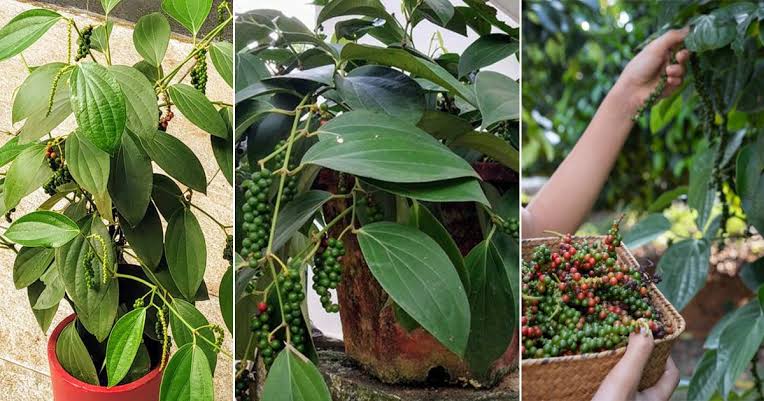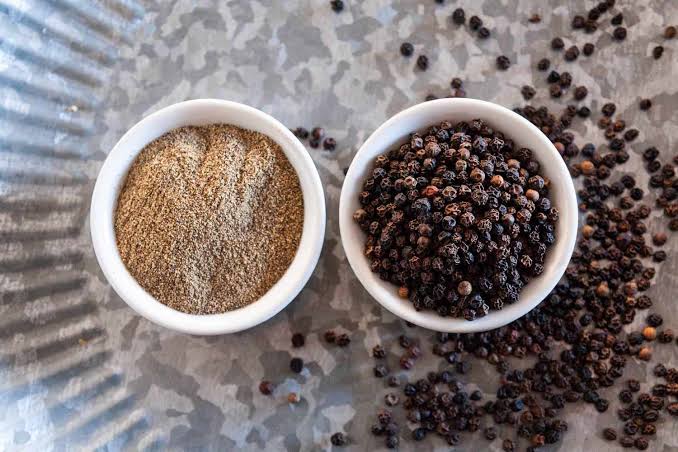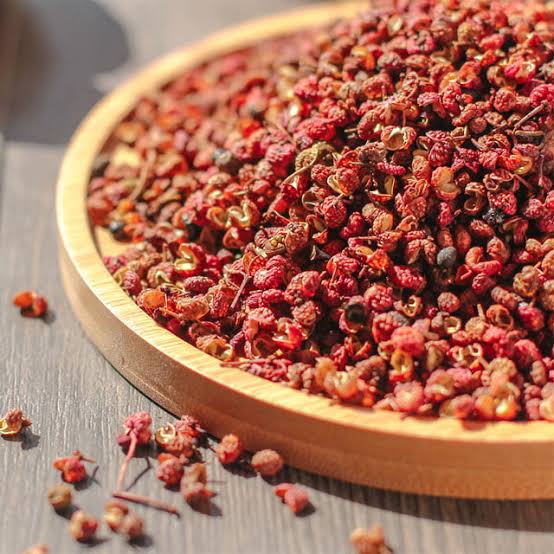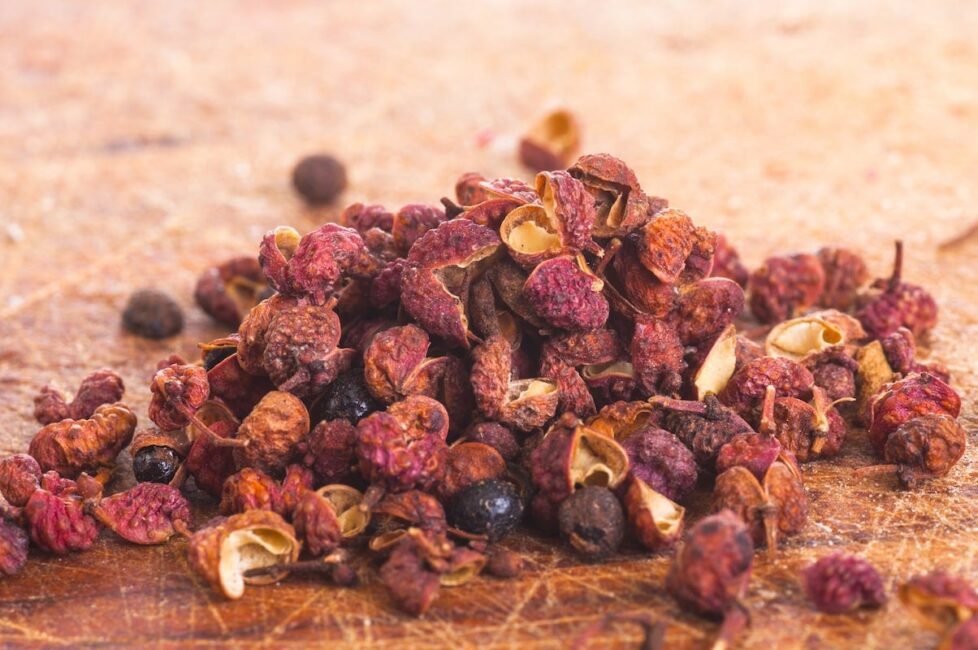Peppercorn is a tiny spice that adds lots of flavor to food. It is small and black, like tiny balls. People use peppercorn to make their food taste better. It is a common spice in many kitchens.
You can find peppercorns in a jar or a little shaker at the store. They are not expensive. People like to have peppercorn at home because it makes food taste yummy. You can use it when you cook chicken, steak, or even vegetables. It’s a friend to all types of food.
Peppercorn comes from a plant. The plant grows in places like India and Indonesia. The plant has little fruits, and inside those fruits are the peppercorns. Farmers pick the fruits and take out the peppercorns. Then, they dry them in the sun. That’s how they become the black peppercorns we use.
When you cook with peppercorn, it gives a little spicy taste to your food. Some people like it a lot, and some people like just a little. You can twist the pepper shaker to make the peppercorns come out. Then, you can sprinkle them on your food. Be careful not to put too much, or your food might become too spicy!
Peppercorn has been around for a very long time. People in ancient times liked to use it too. They even traded it with other countries. That’s how important peppercorn was. Nowadays, it’s easy to get, and you can enjoy it in your favorite dishes.
In addition, peppercorn is a small but mighty spice that makes your food taste better. It comes from a plant and has been loved by people for a very long time. So, next time you cook, don’t forget to add a little sprinkle of peppercorn for extra flavor.
Read Also: Effect of Tropical Climate on Animal Parasites, Vectors and Diseases
How to Grow Peppercorn

Here’s a simple guide on how to grow peppercorns:
1. Choose the Right Location: Peppercorn plants thrive in warm and tropical climates. They need a lot of sunlight, so choose a location in your garden that receives full sun.
2. Select the Variety: There are different types of peppercorn plants, but the most common are black, white, and green peppercorns. Choose the variety that you prefer. You can start with black peppercorns as they are the most popular.
3. Prepare the Soil: Peppercorn plants prefer well-draining soil that is rich in organic matter. You can improve the soil quality by adding compost or well-rotted manure.
4. Planting Seeds: You can start peppercorn plants from seeds. Plant the seeds about 1/4 inch deep in the soil. Water the soil lightly after planting.
5. Provide Support: Peppercorn plants are vines, so they need support to climb. You can use a trellis or a fence for this purpose.
6. Watering: Peppercorn plants need regular watering, but they don’t like to sit in waterlogged soil. Keep the soil consistently moist but not soggy.
7. Fertilization: Feed your peppercorn plants with a balanced, slow-release fertilizer during the growing season (spring and summer).
8. Pruning: Prune your peppercorn plant to encourage bushier growth. You can trim back the vines as needed.
9. Drying: To make black peppercorns, dry the harvested berries in the sun for several days until they become shriveled and turn black.
10. Storage: Store your dried peppercorns in an airtight container in a cool, dry place. They can last for a long time.
Remember that growing peppercorns can take time and patience, as it might be a few years before your plant produces a significant harvest. However, it can be a rewarding experience to grow your own spices at home.
15 Health Benefits of Peppercorn
Here are 15 health benefits of consuming peppercorns:
1. Digestive Health: Peppercorns can aid digestion by stimulating the production of digestive enzymes, which helps break down food.
2. Antioxidant Properties: They contain antioxidants that can protect cells from damage caused by free radicals, potentially reducing the risk of chronic diseases.
3. Anti-Inflammatory: Peppercorns possess anti-inflammatory properties that may help alleviate inflammation-related conditions.
4. Weight Management: Some studies suggest that the piperine in black pepper may help in weight management by increasing metabolism and reducing fat formation.
5. Improves Nutrient Absorption: Piperine in black pepper can enhance the absorption of certain nutrients like curcumin from turmeric and other vitamins and minerals.
6. Respiratory Relief: In traditional medicine, pepper is used to relieve respiratory issues like coughs and congestion.
7. Oral Health: Pepper’s antibacterial properties may contribute to oral health by combating bacteria in the mouth.
8. Skin Health: The antioxidants in pepper can promote healthy skin by protecting it from oxidative damage.
9. Pain Relief: Topical pepper-based creams can be used for pain relief, particularly for conditions like arthritis.
10. Heart Health: Some studies suggest that piperine may help lower cholesterol levels and improve heart health.
11. Cognitive Function: Piperine may have a positive impact on brain health by improving memory and cognitive function.
12. Cancer Prevention: The antioxidants in peppercorns may help reduce the risk of certain cancers by neutralizing harmful free radicals.
13. Blood Sugar Control: Piperine may assist in regulating blood sugar levels, making it beneficial for individuals with diabetes.
14. Immune Support: The vitamins and minerals in peppercorns can help support a healthy immune system.
15. Stress Reduction: Some compounds in peppercorns may have a calming effect and help reduce stress and anxiety.
It’s important to note that while peppercorns can offer these potential health benefits, they should be consumed in moderation as part of a balanced diet. Excessive consumption may lead to gastrointestinal discomfort in some individuals. Always consult with a healthcare professional for personalized dietary advice and guidance.
Uses of Peppercorn

Here are seven common and beneficial uses of peppercorns:
1. Culinary Flavor Enhancer: Peppercorns are widely used as a seasoning to add flavor to various dishes. They provide a spicy, pungent, and slightly fruity taste to foods, enhancing their overall taste.
2. Digestive Aid: Peppercorns can stimulate the production of digestive enzymes, which helps improve digestion. Many traditional cuisines use pepper to aid in digestion.
3. Food Preservation: Historically, peppercorns were used to preserve food. Their antimicrobial properties can inhibit the growth of bacteria, helping to extend the shelf life of some dishes.
4. Health Tonic: Pepper has been used in traditional medicine to make tonics that may help boost the immune system and promote overall well-being.
5. Natural Exfoliant: Ground black pepper can be used in homemade facial and body scrubs. It acts as a natural exfoliant, removing dead skin cells and leaving the skin feeling refreshed.
6. Insect Repellent: Peppercorns can be used as a natural insect repellent. Placing whole peppercorns in areas where ants or other insects are a problem may help deter them.
7. Aromatherapy: Pepper essential oil, derived from peppercorns, is used in aromatherapy. It is believed to have stimulating and uplifting properties when used in diffusers or diluted for massage.
These common uses of peppercorns showcase their versatility beyond just seasoning food. Whether in the kitchen, for health purposes, or even as a natural repellent, peppercorns have found their way into various aspects of our daily lives.
Read Also: List of Top 10 Insect Pests and their Management in Beans Production
Sichuan Peppercorns

Sichuan Peppercorns are special spices from China that make your mouth feel funny and tingly. They are not like regular black pepper; they are little red seeds with a magical touch.
Sichuan Peppercorns come from a place in China called Sichuan. It’s a hilly region where these tiny red seeds grow on special bushes. People in Sichuan have used these peppercorns for a very long time to make their food taste exciting.
When you put Sichuan Peppercorns in your mouth, something interesting happens. They make your mouth feel like it’s having a little party. It’s not spicy like chili peppers; instead, it’s a tingly feeling, almost like your mouth is dancing!
People in Sichuan and all around the world use these peppercorns to add a unique flavor to their food. They’re often used in dishes like Kung Pao Chicken and Mapo Tofu, which have a spicy and numbing sensation that’s famous in Chinese cuisine.
Sichuan Peppercorns aren’t just about taste; they can be good for you too! Some folks believe they can help with digestion and make your tummy feel better.
These peppercorns love to hang out with other spices like garlic, ginger, and soy sauce. They create tasty combinations that make your taste buds dance even more!
You might be surprised to know that Sichuan Peppercorns are not related to the regular black or white pepper you see on your dining table. They come from a different plant family altogether.
When using Sichuan Peppercorns, it’s essential to use them wisely. Too many can make your food super tingly, and some people might find it too much to handle. So, start with a little and add more if you want more zing.
In addition, Sichuan Peppercorns are like little red magicians in the world of spices. They make your mouth do a special dance and add a unique flavor to your food. So, the next time you try a dish with these peppercorns, remember the tingly twist they bring to your plate.
Szechuan Peppercorns

Szechuan Peppercorns are small, reddish-brown spices that come from a place called Sichuan in China. These little gems are famous for their unique tingly and numbing sensation. They are not your everyday pepper; they have a special twist.
Szechuan Peppercorns grow on bushes in the Sichuan region of China. People there have used them for ages to make their food exciting and flavorful.
When you taste Szechuan Peppercorns, they don’t burn like chili peppers or taste like black pepper. Instead, they create a tingling feeling in your mouth, like tiny bubbles are having a party on your taste buds. It’s a sensation unlike any other spice.
These peppercorns are a superstar in Chinese cuisine. They add a unique and thrilling flavor to dishes like Mapo Tofu and Szechuan Chicken. The tingly sensation, combined with a bit of spice, makes these dishes stand out.
Some people believe that Szechuan Peppercorns can help with digestion and soothe an upset stomach. They also have antioxidants that might be good for your health.
These peppercorns love to be paired with other flavors like ginger, garlic, and soy sauce. Together, they create dishes that are a delightful explosion of taste and sensation.
Szechuan Peppercorns are not related to the regular black or white pepper. They come from a different plant family and offer a completely different flavor experience.
When using Szechuan Peppercorns in your cooking, remember that a little goes a long way. Too many peppercorns can make your dish overwhelmingly tingly, so use them in moderation.
However, Szechuan Peppercorns are the magical spice that can make your taste buds dance with delight. They bring a unique tingly twist to Chinese dishes and add excitement to your culinary adventures. So, next time you enjoy a Szechuan-inspired meal, savor the tingling sensation these peppercorns bring.
Pink Peppercorn
Pink Peppercorns are tiny, pinkish-red spices that add a gentle burst and yummy taste of flavor and color to your dishes. They are not like your regular black or Szechuan pepper; they bring a touch of elegance to your plate.
Pink Peppercorns come from different parts of the world, including South America and Madagascar. They grow on a small tree, and each little berry packs a mild, fruity flavor.
These peppercorns are not spicy like black pepper or numbing like Szechuan pepper. Instead, they have a delicate, slightly sweet, and fruity taste. Some say they even have hints of citrus.
Pink Peppercorns are used in cooking to add a pop of color and a unique flavor. They are often seen in salads, seafood dishes, and even in fancy sauces for a touch of sophistication.
While they may not have strong health benefits like some other spices, pink peppercorns contain antioxidants and can be a delightful addition to a balanced diet.
These peppercorns are not just tasty; they also bring a beautiful pink hue to your dishes. Their vibrant color can make your food look as good as it tastes.
Pink Peppercorns are not true peppercorns; they are actually related to cashews and poison ivy. So, if you have nut allergies, you might want to be cautious.
When using Pink Peppercorns, remember that their flavor is delicate. It’s best to add them towards the end of cooking to preserve their unique taste.
Pink Peppercorns are the dainty darlings of the spice world. They may not be fiery or numbing, but their mild, fruity flavor and striking color can elevate your culinary creations to new heights. So, don’t be shy to add a sprinkle of these little pink gems to your next dish for a touch of elegance and flavor.
Black Peppercorn
Black Peppercorn is a common and widely used spice that you probably have in your kitchen right now. It’s the tiny black bead-like spice that’s a superstar in the culinary world.
Black Peppercorns are grown on a flowering vine called Piper nigrum, which is native to India. They are harvested when the berries are still green and unripe, and then they are dried to turn into the familiar black peppercorns.
Black Peppercorns have a bold, spicy, and slightly pungent flavor. When you bite into one or grind it, you’ll feel a warm, peppery kick that wakes up your taste buds.
These peppercorns are kitchen essentials. You’ll find them in nearly every cuisine around the world. They’re used to season a wide variety of dishes, from scrambled eggs to grilled steaks, soups, and sauces.
Black Peppercorns are not just about flavor; they offer potential health benefits too. They contain antioxidants and may aid digestion by stimulating the production of digestive enzymes.
To get the best flavor, it’s recommended to grind black peppercorns just before using them. This preserves their essential oils, ensuring a more vibrant taste.
Peppercorns were once so valuable that they were used as currency and even considered treasures. They played a significant role in the spice trade routes of ancient times.
While black peppercorns are beloved for their flavor, too much can overpower a dish. Use them judiciously, especially if you’re not a fan of too much spiciness.
In conclusion, Black Peppercorn is the timeless spice that adds zing and depth to your meals. Its bold flavor has been a kitchen staple for centuries, and its versatility makes it a must-have in every cook’s pantry. So, the next time you reach for the pepper grinder, remember the classic charm of the black peppercorn.
Read Also: What is Gaseous Fuel?
